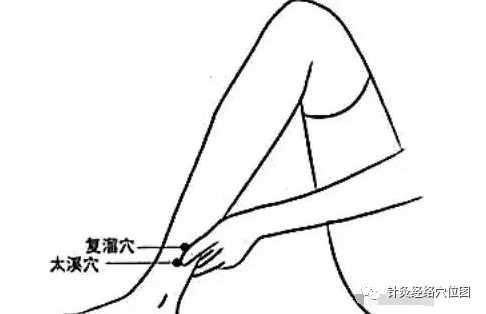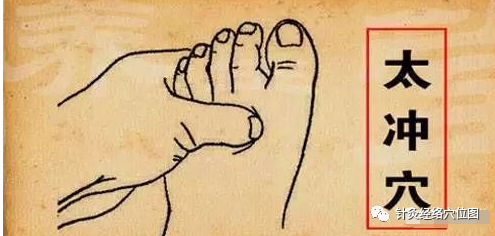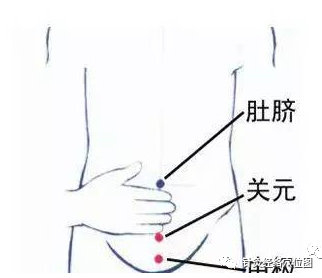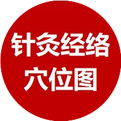Deficiency syndromes refer to a variety of chronic diseases caused by the deficiency of organs and weakened vital energy. Although these syndromes are numerous and complex, they are fundamentally related to the five organs, and the damage to these organs typically involves Yin, Yang, Qi, and Blood. In summary, there are Yin deficiency, Yang deficiency, and both Yin and Yang deficiency; Qi deficiency, Blood deficiency, and both Qi and Blood deficiency. Deficiency syndromes are commonly seen in clinical practice, and as long as differential diagnosis and treatment are applied, along with holistic treatment and mastery of the acupuncture points and methods for tonifying deficiency syndromes, satisfactory results can be achieved. Today, we will share the symptoms and improvement methods for the four common types of deficiency syndromes for your daily reference.
The common deficiency syndromes of the five organs are summarized as follows:
Qi deficiency: primarily refers to lung Qi and spleen Qi deficiency.
Blood deficiency: primarily refers to heart Blood and liver Blood deficiency.
Yang deficiency: primarily refers to heart Yang, spleen Yang, and kidney Yang deficiency.
Yin deficiency: primarily refers to lung Yin, spleen Yin, heart Yin, and kidney Yin deficiency.
The acupuncture meridian point diagram indicates that these four types of syndromes often occur together in clinical practice, such as lung and kidney Yin deficiency, heart and liver Blood deficiency, and spleen and kidney Yang deficiency, which must be carefully distinguished during diagnosis.
1. Qi Deficiency
1. Lung Qi Deficiency
Main symptoms: shortness of breath, spontaneous sweating, susceptibility to colds, pale complexion, and pale tongue.
Treatment principle: Tonify lung and benefit Qi.
Acupuncture points: Taiyuan (Taiyuan), Feishu (Lung Shu), Taixi (Tai Xi) (Taiyuan, Feishu, Hegu, and Zhongfu are all key points for tonifying lung Qi; Taiyuan primarily tonifies lung Qi and nourishes lung Yin, Hegu tonifies lung Qi and regulates intestinal Qi, Zhongfu is particularly adept at broadening the chest and regulating lung Qi, while Feishu purely tonifies lung Qi with less effect on Qi regulation. Taixi tonifies kidney Qi and nourishes kidney Yin, as lung Qi is rooted in the kidneys.)
2. Spleen Qi Deficiency
Main symptoms: reduced appetite, discomfort in the stomach after eating, easy fatigue, loose stools, and a sallow complexion.
Treatment principle: Strengthen the spleen and benefit Qi.
Acupuncture points: Zusanli (Foot Three Miles), Yinlingquan (Yin Mound Spring), Hegu (Joining Valley) (Zusanli is the most important point for strengthening the spleen and stomach, adept at tonifying intestinal deficiency, stomach, and spleen deficiency, and should not be over-dispersed. Yinlingquan is effective for strengthening the spleen, treating blood disorders, removing dampness, and promoting the lower jiao’s water pathways, thus often used for reducing swelling and weight loss. Hegu has a similar function to Qihai and is good for tonifying Qi throughout the body.) Of course, if accompanied by loose stools, moxibustion on the Feishu point can be added, as Feishu is good for purely tonifying the spleen.
2. Blood Deficiency
1. Heart Blood Deficiency
Main symptoms: palpitations, vivid dreams, pallid complexion, and pale tongue.
Treatment principle: Nourish Blood and calm the spirit.
Acupuncture points: Shenmen (Spirit Gate), Xinshu (Heart Shu), Sanyinjiao (Three Yin Intersection) (Shenmen is the source point of the heart meridian, adept at calming the spirit and can tonify or disperse; tonifying can benefit heart Qi, while dispersing can clear heart fire. Xinshu is often used to tonify heart Qi and heart Blood and should not be dispersed. Sanyinjiao is a point of the spleen meridian but serves as a thoroughfare for the liver, kidney, and spleen meridians, thus very effective for nourishing Blood, tonifying Blood, invigorating Blood, and nourishing all Yin conditions. It can also be used for conditions of Yin deficiency with excess fire.)
2. Liver Blood Deficiency
Main symptoms: dizziness, palpitations, tinnitus, women with scanty or absent menstruation, and pale complexion.
Treatment principle: Tonify Blood and nourish the liver.
Acupuncture points: Sanyinjiao, Ququan (Curved Spring), Ganshu (Liver Shu), Jianshi (Intermediary) (Sanyinjiao has been mentioned before; it is essential for all blood conditions! Blood conditions generally involve points on the spleen, liver, and heart meridians. Ququan nourishes the liver and can also disperse excess liver Yang. Jianshi is primarily used to move Qi and open channels; if accompanied by headaches or dizziness, Taichong (Great Surge) should be added, as Taichong is primarily responsible for dispersing and guiding liver Qi. Therefore, it is better to disperse than to tonify; Taichong is clinically more effective than Jianshi.)
3. Yang Deficiency
1. Heart Yang Deficiency
Main symptoms: palpitations, spontaneous sweating, chest tightness and pain, cold limbs, and pale or purplish tongue.
Treatment principle: Warm and tonify heart Yang.
Acupuncture points: Xinshu, Shenmen, Guanyuan (Guanyuan is the largest gathering place of Yang Qi in the body; to invigorate Yang Qi, Guanyuan should be the first choice.) If the patient experiences chest tightness and pain, Jianshi can be added to regulate Qi and relieve pain. Adding Ge Shu (Diaphragm Shu) can invigorate blood and resolve stasis. Ge Shu is better for treating upper body blood conditions, while Sanyinjiao is better for lower body blood conditions.
2. Spleen Yang Deficiency
Main symptoms: reduced appetite, feeling cold, abdominal cold pain, borborygmi, diarrhea, or even undigested food.
Treatment principle: Warm the middle and strengthen the spleen.
Acupuncture points: Shenkui (Spirit Gate), Guanyuan, Zusanli, Yinlingquan, Pishu (Spleen Shu) (Pishu directly tonifies various deficiency conditions of the spleen. Shenkui tonifies the lower jiao, warming Yang and dispersing cold; Guanyuan is primarily used to invigorate Yang Qi and strengthen the foundation. Zusanli is a major point for tonifying the spleen and stomach, as the spleen and stomach are the foundation of postnatal life, so it is often used to enhance the body’s immune response. Yinlingquan strengthens the spleen and stomach.)
Some may ask why Tianshu (Heavenly Pivot) is not used? Tianshu can also be used, but it should be first dispersed and then tonified; otherwise, it can easily cause abdominal distension, as Tianshu is primarily dispersing and not suitable for tonification. If used for treating constipation, it will be more effective.
3. Kidney Yang Deficiency
Main symptoms: cold limbs, sore lower back, male impotence and premature ejaculation, female scanty menstruation, and low libido.
Treatment principle: Warm and tonify kidney Yang, while nourishing essence and blood.
Acupuncture points: Guanyuan, Shenshu (Kidney Shu), Taixi (Tai Xi), Mingmen (Life Gate) (Mingmen is the fire point of the governor vessel, which governs all Yang meridians and is good for tonifying kidney Yang.)
4. Yin Deficiency
1. Lung Yin Deficiency
Main symptoms: dry cough without phlegm, dryness in the throat, even loss of voice, red tongue with little moisture.
Treatment principle: Nourish Yin and moisten the lungs.
Acupuncture points: Taiyuan, Fuliu (Reverting Flow), Chize (Cubital Marsh) (Taiyuan is the source point of the lung meridian, capable of tonifying and dispersing; Chize is primarily a dispersing point, often used to clear lung heat and should not be tonified. The reason for choosing Fuliu is that the root of lung Qi is in the kidneys.)
2. Spleen Yin Deficiency (Stomach Yin Deficiency)
Main symptoms: dry mouth and lips, poor appetite, dry and hard stools, even dry retching.
Treatment principle: Nourish Yin and harmonize the stomach.

Acupuncture points: Fuliu, Neiting (Inner Courtyard), Zusanli (Foot Three Miles) (Zusanli, for strengthening the spleen and stomach, can only be tonified by acupuncture; moxibustion is more effective for fire conditions, thus this condition belongs to Yin deficiency with excess fire. Neiting primarily disperses stomach fire; the spleen and stomach are interrelated, and Neiting is often used for this condition. Fuliu is effective for nourishing Yin; acupuncture can tonify Yin, but it should not be dispersed, as dispersing will exacerbate Yang excess.)
3. Liver Yin Deficiency
Main symptoms: irritability, headaches, dizziness, tinnitus, dry eyes, light sensitivity, or numbness in limbs, flushed complexion, and red tongue with little moisture.
Treatment principle: Nourish liver Yin.

Acupuncture points: Ququan, Fuliu, Sanyinjiao, Taichong (Ququan plays an important role in nourishing liver Yin, so acupuncture can enhance liver nourishment. Fuliu primarily nourishes Yin through the kidney meridian. Sanyinjiao, as mentioned before, can treat all Yin deficiency conditions and blood conditions, which is also the purpose of selecting Sanyinjiao. Taichong can be used for dispersing and treating dizziness.)
4. Kidney Yin Deficiency
Main symptoms: dizziness, tinnitus, dry mouth and throat, easy hair loss, loose teeth, and red tongue with little moisture.
Treatment principle: Nourish kidney Yin.

Acupuncture points: Fuliu, Taixi, Shenshu, Zhongji (Fuliu, Taixi, and Shenshu are core points on the kidney meridian; Shenshu is primarily used to tonify kidney Qi, Fuliu nourishes Yin and tonifies the kidneys, and Taixi can tonify kidney Qi and nourish Yin. Zhongji regulates the body’s water pathways but is particularly effective for the lower body’s water pathways; tonifying can stabilize urination, while dispersing can promote water pathways, which is also effective for weight loss.)
Give a thumbs up to support health together!
_Follow us by clicking the “business card” below
Light it up so more people can see👇

